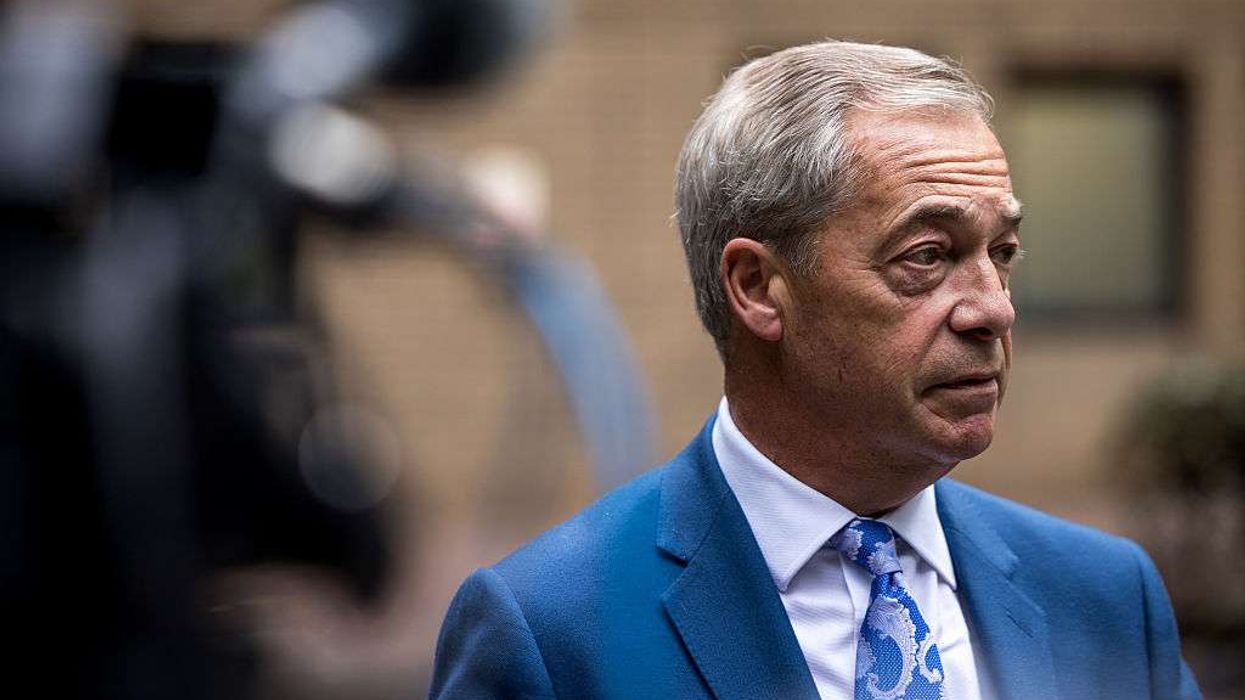THERE’S hardly a dull moment for the first family of steel.
First, and perhaps a little unexpectedly, it emerged that the family had contributed £10,000 to Boris Johnson’s successful Conservative Party leadership bid in July.
Lakshmi Mittal, the 69-year-old CEO of ArcelorMittal, the world's largest steelmaker, was among a group of wealthy donors who turned up in the obligatory Register of Members' Financial Interest, maintained by the UK's Parliamentary Commissioner for Standards. All MPs have to keep a public record of any monetary or linked benefit they receive.
Mittal (senior) is registered as a “private and individual” donor whose contribution to the Johnson camp was received on July 16, a week before Johnson was declared party leader, after he beat then foreign secretary Jeremy Hunt to replace Theresa May as prime minister.
Amit Bhatia, Mittal's son-in-law who is married to his daughter Vanisha, also turned up in the same register. The businessman, who is chairman of Championship side QPR, was also registered as a private and individual donor whose donation, "or nature and value if donation in kind", was recorded as being worth £10,000.
Mittal's office declined to comment about the donation or say anything about Brexit. At the time, Johnson had spoken about a “do or die” commitment to leaving the EU.
The Rajasthan-born steel tycoon was famously caught on camera last year on the sidelines of the World Economic Forum (WEF) in Davos, Switzerland, discussing Brexit with former prime minister David Cameron. He was the prime minister who had called the Referendum - with many commentators saying it was to head off the continuing threat at that time of the UK Independence Party, then led by Nigel Farage.
Cameron was seen telling Mittal that Brexit is "a mistake, not a disaster" and that it had turned out "less badly than we first thought”. He might not, however, hold the same sentiment at the time of this publication going to press. Britain’s governance logjam after Theresa May appeared no better with Boris Johnson in No.10 with no majority to govern and constricted by a bill passed by MPs ordering him take a no-deal Brexit off the agenda.
Mittal's association with Johnson dates back to his time as the mayor of London, having backed the ArcelorMittal Orbit during the 2012 Olympic Games.
The giant 114.5-metre steel sculpture, designed by British Indian artist Anish Kapoor, involved an investment of around £19.6 million from ArcelorMittal.
"It makes me very proud that ArcelorMittal plants from across the world contributed to this showcase of the strength and versatility of steel," Mittal had said at the time.
It marked a political shift as the Mittal family was previously associated with the Labour Party, during Tony Blair's time as prime minister in the early 2000s, but a change seems to have occurred as David Cameron took charge of the party and when he became prime minister in 2010 and was seen attending a QPR match with the Indian businessman.
After a rocky spell, the tycoon has steadied the massive ship that is AcrelorMittal.
In the summer the company in its Q2 results stated a loss of $0.447 billion (approx £37bn) and said the company would drop European production levels in light of the weak demand and high import levels in Europe."
After a strong 2018, market conditions in the first half of 2019 have been very tough, “with the profitability of our steel segments suffering due to lower steel prices combined with higher raw material costs," Mittal said in the half-yearly report.
"Global overcapacity remains a clear challenge. We have reduced capacity in Europe in response to the current weak demand environment," he said.
As the world's leading steel manufacturer, he flagged that further action is required to address the increasing level of imports entering the European continent due to "ineffective safeguard measures" and added that ArcelorMittal will continue to engage with the European Commission to create a level playing field for the sector.
"A supportive regulatory and funding environment is also crucial to our ambition to significantly reduce our emissions as announced in our recent Climate Action report," he said.
Since the Mittals took over ArcelorMittal in 2006, they have become the first family of steel and hold global interests in steel-making.
They continue to contract in some countries, cutting workforces and operations, while expanding and taking on firms and employees in others. It is all part of Mittal’s 2020 plan and the desire to reduce overall debt to a manageable $6bn.
Over the last year or so, their principal battlefield has been in India where they had been given the right to acquire the now defunct Essar Steel, after approval by India’s new Insolvency and Bankruptcy code (and the National Company Law Tribunal, as it is known).
Essar Steel was also family owned - the Ruias are prominent in India and have myriad businesses spread across the globe with Essar Steel, one that ran up debts of $7bn. The family still holds sway over the Essar Group, but the steel operation ran into difficulty when the gas-powered plant fell into a different category that was no longer supported by the Indian government.
Two years ago, lenders and creditors decided to try to recover their monies and placed Essar Steel through India’s new bankruptcy system. The case led to much legal wrangling and at the time of going to press, a court had indicated that everything needed to be resolved in the Mittals’ favour.
This has been further complicated by Mittal’s business with Essar Group which have also turned awry.
Mittal is suing the Essar Group after the company was granted £997 million in damages in an arbitration award.
Later, the UK High Court heard that its ruling “remained unsatisfied” and there appeared no prospect that Essar Group was going to pay up.
The court also said that Essar had acted in “bad faith” by hiding documents and warned there was a “serious risk” the business would try to hide properties.
Ruia’s Essar Group was alleged to have hidden assets through a series of fake internal transactions.
Essar company’s emails showed a “deliberate withholding or concealment of documentation”, the judge concluded.
In January this year, ArcelorMittal obtained a worldwide freezing, disclosure orders against Essar Steel and other branches of the group.
A spokesman for Essar said: “Essar does not agree with many of the factual findings in the ruling, however it recognises that the orders remain in place and will continue to ensure that it adheres to their terms.”
“The Essar Global holding company was not liable for the award against Essar Steel,” he added.
Much of the focus of attention between the Mittals and the bid to acquire Essar Steel is located in India.
The forced sale of the 10 million metric tons a year mill has hit numerous roadblocks including rules that compelled Mittal to shell out an extra $1 billion to clear debts of two firms in which he had a share and reportedly to sell his interests in one of them for just a rupee a share.
While the bankruptcy court gave the Mittals the nod, the Ruias have looked to assert their own rights and even made a bid to acquire their own distressed entity with other backers.
Challenges from Essar Group itself, rival bidders and some creditors have seen ArcelorMittal make dozens of trips to court since an initial bid in February 2018 - dwarfing Lakshmi and son Aditya’s five-month long successful capture of Arcelor Mittal.
“We have acquired lots of companies around the world. For the first time, we have been sued for acquiring a company," Aditya Mittal, Mittal’s 43-year-old son and the company’s chief financial officer, told BloombergQuint interview in January. “These are unique circumstances."
The legal wrangling landed in the Supreme Court last year, setting precedents for India’s two-year-old bankruptcy law.
The drama made it clear to other business figures who till recently were accustomed to an ineffectual court system and to walking away from debts without serious consequences. This may well come to be seen, in time, as a defining moment for India’s relatively new bankruptcy and insolvency proceedings.
The legal arguments were fierce and Essar Steel’s own complex ownership structure further excarbated an already difficult and awkward situation.
What is ironic, is that the world’s biggest steelmaker has no interests in the country of his origin.
Prior to his acquisition of Essar, he had no significant active steel interests in the country of his origin.
He left Kolkata, the seat of his family in West Bengal, and its main businesses there in the 1970s to run a steel plant in Indonesia initially.
Prior to his interest in Essar Steel, he had made two attempts to set up greenfield plants in Jharkhand and Odisha in India but never quite managed to put something into operation, largely because of the interminable bureaucracy involved.
He still has one project with the state-owned Steel Authority of India that helps to produce parts for the domestic automobile industry.
There’s one good reason why the Mittals have persisted - India is the world’s fastest growing steel market and deemed to be no4 presently.
Since 2010, crude steel production has risen 4.6 per cent a year to 95 million tonnes, according to data from the World Steel Association.
With Indian infrastructure spending rising, the Ministry of Steel expects installed capacity to rise from 128 million tonnes in 2018 to 300 million tonnes in 2030.
In India there is only per person consumption of 69kg presently and the health of the market can be assessed in that three bankrupt steel plants - Bhushan Steel, Monnet Ispat, Electrosteel Steels losses were recovered by Indian banks. There was some feeling that those investing in Indian steel were a bit too optimistic, the long-term remains solid, but short-term pressures and the general flatness of the world economy was making steel production, in general, relatively tough-going.
As stated the company is looking to push down its overall debt from $10.5bn to $0.6bn.
“We believe this is the level that will ensure we are able to maintain an investment grade rating through any point in the cycle,” said Mittal. The Essar acquisition will see ArcelorMittal take on additional debt.
Adding Essar Steel would take ArcelorMittal’s 114 million tonne capacity up by eight per cent.
The Mittals believe some simple measures should see the former Essar Steel plants become more efficient and in part, again, explains why the Mittals have persisted where other entrepreneurs might have given up over the myriad challenges. It is understood that the $7bn bid price is about $2bn lower than what it might be if Essar Steel was simply being sold off on the open market.
That discount and the lure of a functioning operations lured the Mittals into Essar Steel and India - and it will be fascinating to see where the company and Lakshmi and Aditya are in a year’s time on Essar Steel.
Arcelor Mittal is the world’s leading steel company and operates in 60 countries with an industrial footprint in 18.







